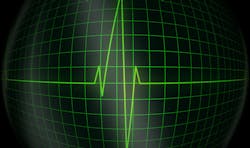RF/microwave technology is quickly becoming viewed as a possible way to treat illnesses. For example, by using in-body sensors, many health parameters, such as blood pressure and heart rate, can be measured automatically by any doctor with access to the internet.
For that to take place, though, a better understanding is needed of how such sensors will work within the human body, using a body as a propagation medium. To learn more, researchers from the Institute of Telecommunications and Multimedia Applications of the Universitat Politecnica de Valencia, Valencia, Spain, analyzed the human body as an RF/microwave propagation medium, especially for UWB signals.
Today’s medical-analysis methods depend more on wireless sensors to provide insights into a patient’s health. Sensors have been developed for monitoring glaucoma, cardiac conditions, and even bowel movements. IEEE Standard 802.15.6-2012 has been established to allocate different portions of the electromagnetic (EM) spectrum for the operation of wearable or implantable sensors for medical use.
The Industrial, Scientific, and Medical (ISM) frequency band from 2.400 to 2.483 GHz is well-established as available spectrum for medical devices, but interest has been growing in the possible use of ultrawideband (UWB) frequencies in the range from 3.1 to 10.7 GHz for medical applications as well. In support of that goal, the researchers set out through computer simulations and measurements to characterize the human body as a propagation medium for wireless medical devices.
The human body represents a complex propagation medium for in-body sensor networks, and details on the effects of living tissues on UWB radio waves aren’t easily found. Predictions can be made through mathematical analysis or the use of simulation software, and measurements can be performed with chemicals known as “phantoms” to mimic the behavior of living human issues, or through vivo measurements on living animals (such as mammals) serving as models for the human body. To better understand how living tissues will serve as a radio channel for UWB signals, the permittivity, conductivity, and permeability characteristics of the tissues must be known in the way they are known for substrate materials, such as printed-circuit-board (PCB) materials, that serve as the basis for high-frequency circuits.
The researchers point to a healthy background of measurement data on these electrical parameters from previous experiments on different living animals, including rats, cows, rabbits, and dogs. Measurements were performed with the aid of on-body and in-body patch antennas and microwave vector network analyzers.
Advances in EM simulation software, such as CST Microwave Studio and ANSYS HFSS, have also made it possible to model an entire human body as a propagation medium with different frequency-dependent electrical characteristics throughout the body. They also explored the use of many different phantoms, such as water with sucrose, to take the place of actual tissues in measurements of relative permittivity and other electrical material characteristics. The scientists include measurement results for phantoms representing many different tissues and organs, including breast tissues, wet skin, fat, and liver, with the UWB frequency ranges for the reported results.
Using EM simulation software, the experimenters developed several human-body models for analyzing UWB radio-channel performance and the relative losses that can be expected through different parts of the body. Multiple antenna setups are recommended for the most efficient use of UWB signals in medical in-body propagation applications, due to the diversity in reception throughout the human body.
See “Ultrawideband Technology for Medical In-Body Sensor Networks,” IEEE Antennas & Propagation Magazine, Vol. 60, No. 3, June 2018, p. 19.
About the Author
Jack Browne
Technical Contributor
Jack Browne, Technical Contributor, has worked in technical publishing for over 30 years. He managed the content and production of three technical journals while at the American Institute of Physics, including Medical Physics and the Journal of Vacuum Science & Technology. He has been a Publisher and Editor for Penton Media, started the firm’s Wireless Symposium & Exhibition trade show in 1993, and currently serves as Technical Contributor for that company's Microwaves & RF magazine. Browne, who holds a BS in Mathematics from City College of New York and BA degrees in English and Philosophy from Fordham University, is a member of the IEEE.

